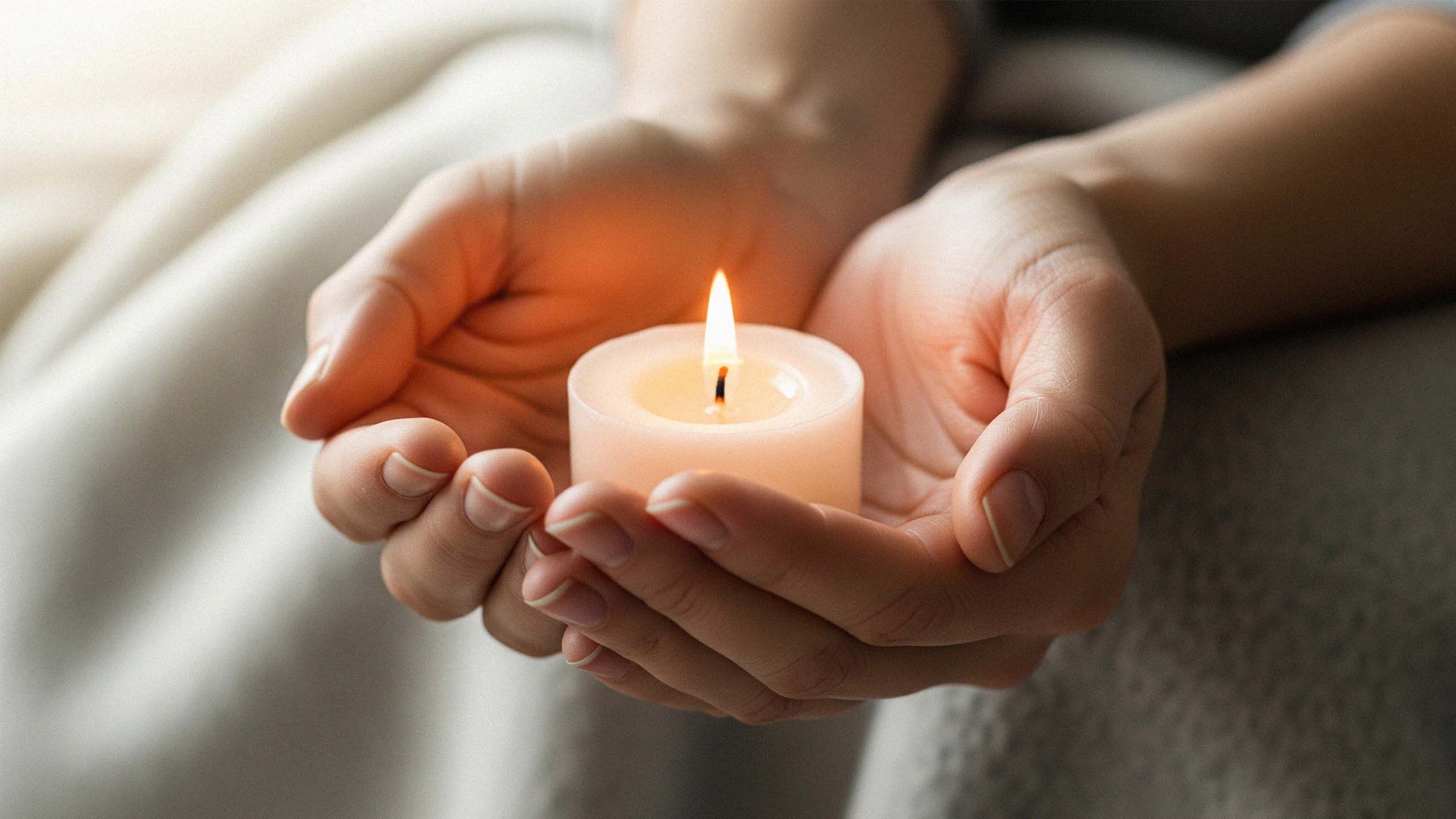The Quiet Language of Skin: Reclaiming Yourself Through Gentle Touch

In the quiet moments after a storm, we often seek a warm blanket, a soft chair, a way to simply be. Emotional wounds, whether from a painful breakup, a difficult family relationship, or a period of profound loneliness, leave us feeling raw and disconnected. We lose our sense of wholeness, our ability to feel safe in our own skin. This is a common human experience—a feeling of being fractured.
While we are often taught to seek external solutions for our emotional pain, there is a powerful and often overlooked path to healing that resides within us: the gentle, intentional act of self-touch. This isn't about physical gratification; it is a profound practice of presence, a way of communicating with ourselves in a language that predates words. It’s a method of coming home to your own body, offering it the care and acknowledgment it may have long been denied.
Understanding the Why: Beyond the Physical
Our skin is our largest organ, but it’s more than just a physical barrier. It’s a sensory map, a repository of our experiences. Think of how a child is soothed by a parent's hand on their back, or how a simple hug can communicate more than a thousand words. These actions trigger the release of oxytocin, a hormone associated with bonding and well-being. When we offer this same gentle touch to ourselves, we are initiating a similar physiological and psychological response. We are, in essence, becoming our own calm harbor.
This practice is particularly useful when emotional pain manifests physically—a knot in the stomach, tension in the shoulders, a feeling of hollowness in the chest. These are not separate phenomena; the body and mind are in constant conversation. By tending to the body, we are also offering comfort to the mind.
A Guide to Gentle Self-Touch Practices
This is not a regimen to be followed with strict rules. Instead, consider these suggestions as invitations—a way to experiment and find what resonates with you. The key is to approach each moment with a spirit of curiosity and kindness, without any expectation of a specific outcome.
1. The Warm-Hand Anchor
Find a quiet, private space where you won't be disturbed. Sit or lie down comfortably. Take a deep, slow breath, and with each exhale, feel your body soften.
Gently place one or both of your hands on a part of your body that feels especially tender or tense. It might be your heart center, your belly, or the back of your neck. Simply rest your hands there. Feel the warmth radiating from your palms. Your only job is to notice. Notice the sensation of your skin under your hands. Notice the gentle rise and fall of your breath beneath your touch. Stay here for a few minutes. This simple act acknowledges that you are here, that you are present, and that you are holding space for yourself.
2. The Soothing Sweep
This practice is about offering your body a kind of internal massage, not to release muscle knots, but to soothe the nervous system. Begin by placing your hands at the base of your neck. With very light pressure, slowly and mindfully sweep them down over your shoulders, down your arms, and off your fingertips. Imagine you are gently brushing away a layer of static.
You can repeat this on your torso, starting from your chest and sweeping down towards your hips. The movement should be slow, deliberate, and gentle. This sweeping motion can be incredibly calming, a way of reconnecting with the outer boundaries of your body in a compassionate way.
3. The Mindful Handshake
Our hands are tools, but they can also be a source of great comfort. Hold one of your hands in the other, as if you were holding a friend's hand. Notice the lines, the warmth, the texture of your own skin. You might gently trace the lines of your palm with your thumb. This simple action can ground you in the present moment, reminding you that you are a whole being with your own capacity for self-support.
4. The Face of Kindness
Our faces hold so much emotion—the smiles we fake, the tears we hold back. To release this tension, use your fingertips to gently and slowly trace the contours of your face. Start from the center of your forehead and move outwards towards your temples. Gently stroke from the bridge of your nose down along your cheeks. Let your touch be as soft as a whisper. This can be a profound act of self-acceptance, a way of honoring the face that has carried you through so much.
The Space Between: A Word on Patience
Healing is not a linear process. Some days, these practices will feel like a profound relief. Other days, they may feel awkward or ineffective. This is normal. The goal is not to force a feeling, but to create a space for one to emerge. The real benefit isn’t in the immediate shift, but in the consistent, quiet message you are sending to yourself: "I am here. I am safe. I am worthy of my own gentle care."
By learning this quiet language of skin, you begin to reclaim your sense of self, piece by piece. You are not just recovering from a wound; you are rebuilding your relationship with the person you will always be with—yourself. This is not about being perfect, but about being present, and in that presence, finding a new and lasting sense of peace.
Q&A:
Q1: How often should I practice these techniques? A: There is no required frequency. The best approach is to listen to your body and mind. You might find comfort in a few minutes of practice each day, or you might only turn to it when you feel particularly overwhelmed or disconnected. The most important thing is to approach it without pressure or judgment.
Q2: What if I don't feel anything when I try this? A: That's completely normal. The purpose of the practice is not to force a specific feeling, but to simply be present with whatever you are experiencing. If you feel numb, disconnected, or nothing at all, simply notice that feeling. The act of noticing is a form of presence and is a valuable step in itself.
Q3: Can this replace professional therapy or counseling? A: No, these practices are not a substitute for professional mental health care. They are a complementary tool—a way to support yourself between therapy sessions or to integrate the work you are doing with a professional. If you are dealing with significant trauma or persistent emotional pain, seeking guidance from a licensed therapist is highly recommended.
Q4: Is it okay if I get distracted or my mind wanders? A: Absolutely. It’s the nature of the mind to wander. When you notice that your thoughts have drifted, simply and gently bring your attention back to the sensation of your touch. This act of returning is a core component of the practice and strengthens your ability to be present.
Disclaimer: The articles and information provided by the Vagina Institute are for informational and educational purposes only. This content is not intended to be a substitute for professional medical advice, diagnosis, or treatment. Always seek the advice of your physician or another qualified health provider with any questions you may have regarding a medical condition.


 English
English  Deutsch
Deutsch  Español
Español  Français
Français 


